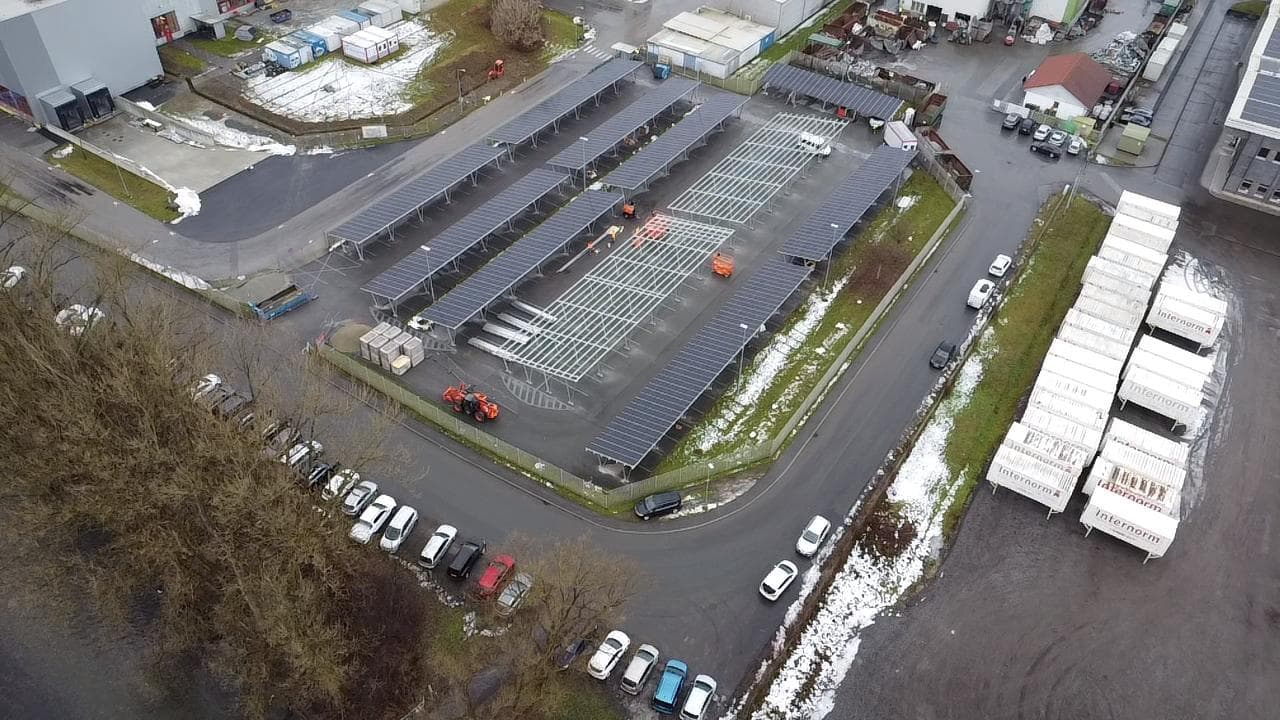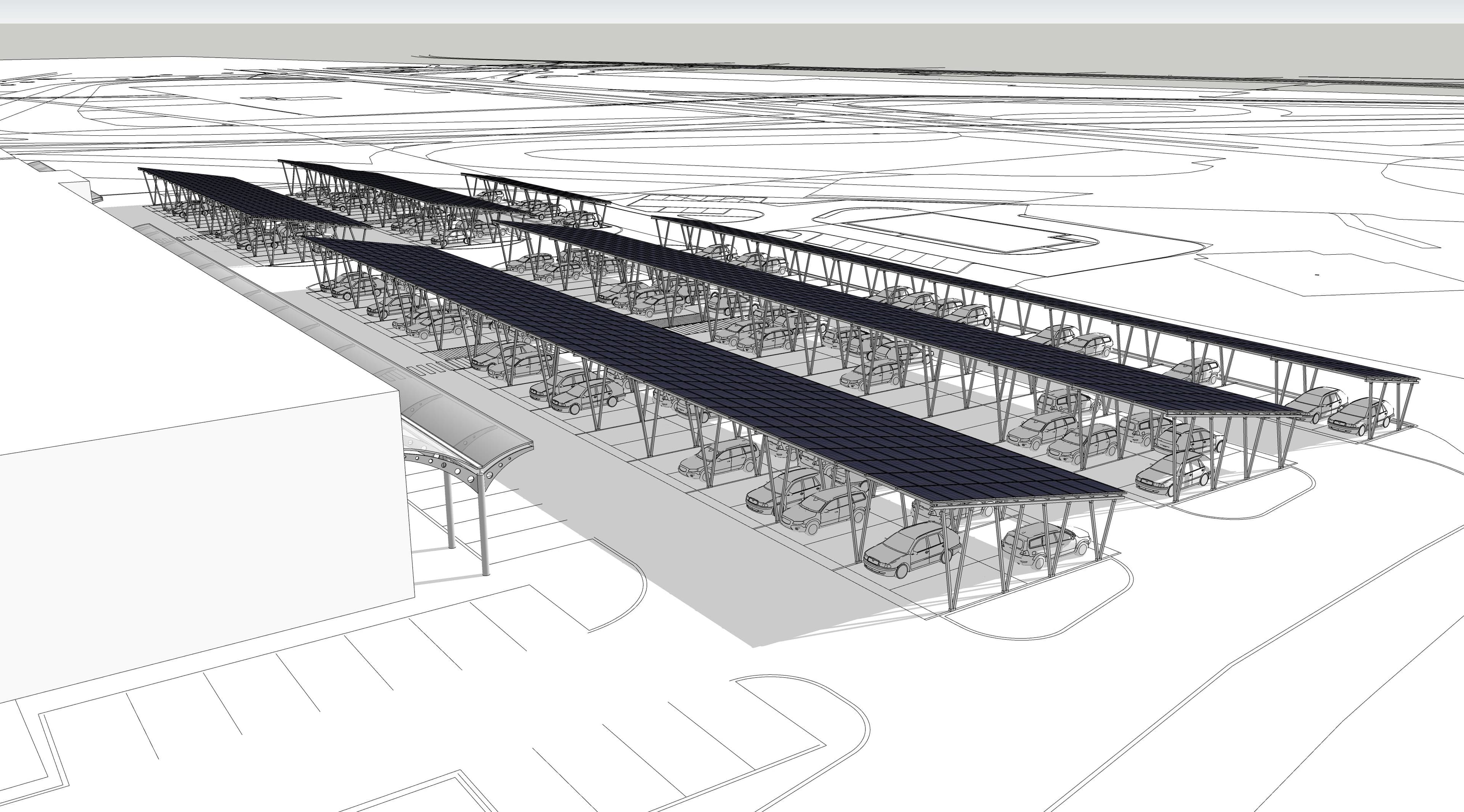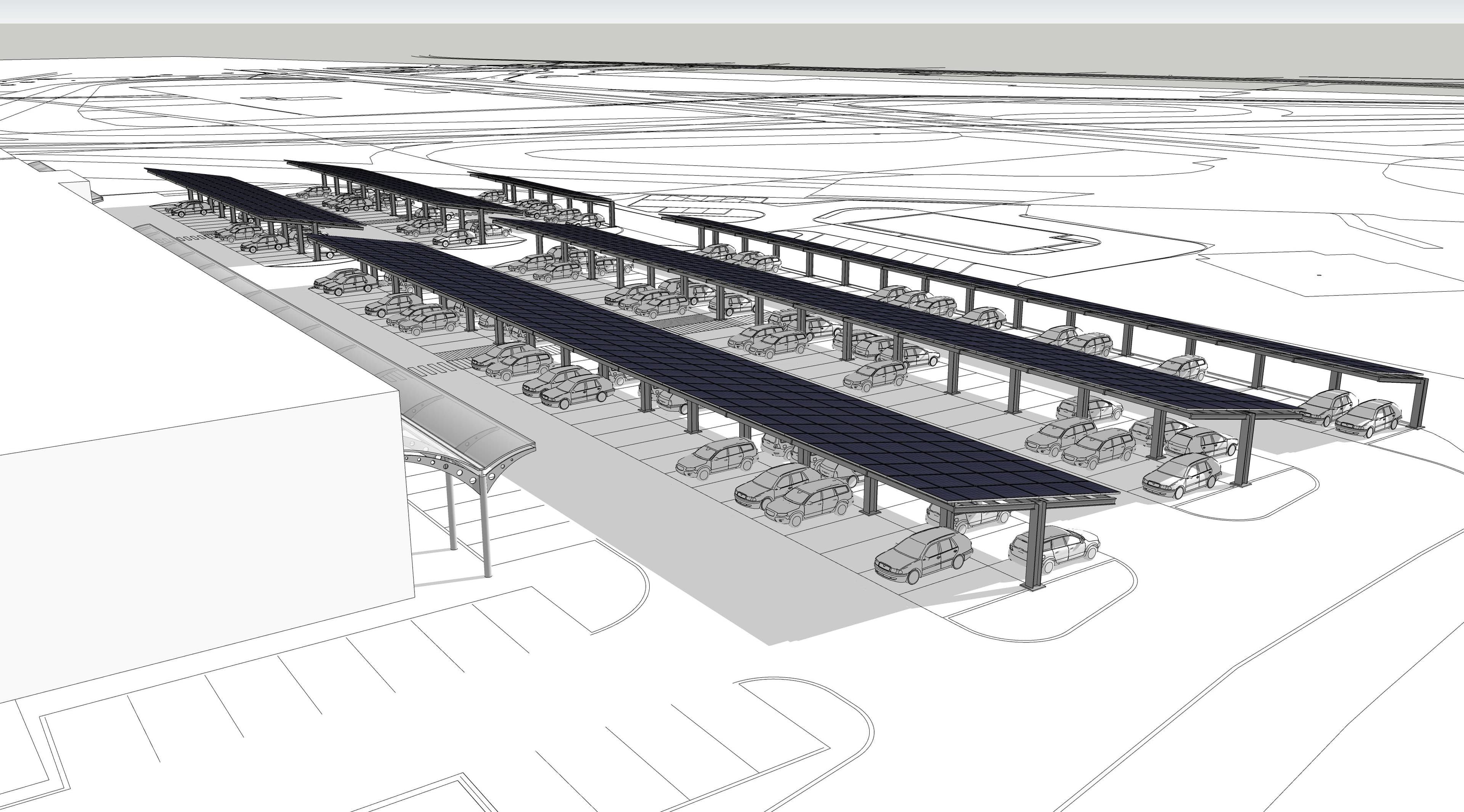However, in this article, we would like to discuss the different types of solutions for the shape of the substructure, i.e., the upper part of the whole system. We will not focus on the different materials (aluminium, steel, wood, etc.), but rather on the different design options for the superstructure, which have a major influence on the utility value of the whole system, the choice of the strut profile and horizontal support elements, the dimensioning and technology of the foundations, and the way the superstructure is fixed to the ground. All these factors are logically also reflected in the cost of the entire carport.
The basic breakdown can be described as follows:
1. Carports with multi-point attachment to foundations: this is a structure that is typically mounted to ground screws or concrete/combined foundations at multiple points on the front and back of the carport.
- The advantage of this type is the much simpler statics of the system, as the weight of the superstructure is distributed on both sides of the structure, and this also greatly simplifies the requirements for the design of the foundations; these can thus be made typically in the form of commonly available earth screws that are screwed into punched or, in a more extreme scenario, pre-drilled holes in the ground.
- The key disadvantage of this solution is the limited manoeuvring space under the carport roof, where, especially when the car park is fully occupied, drivers have a much more difficult situation when opening the car doors for getting in and out of the car in places close to the vertical struts. In carport public car parks (hotels, spas, airports, shopping malls, etc.), minor accidents can also be expected as a result of poorly managed parking manoeuvres.
Visualisation of Carports with Multi-Point Attachment:



